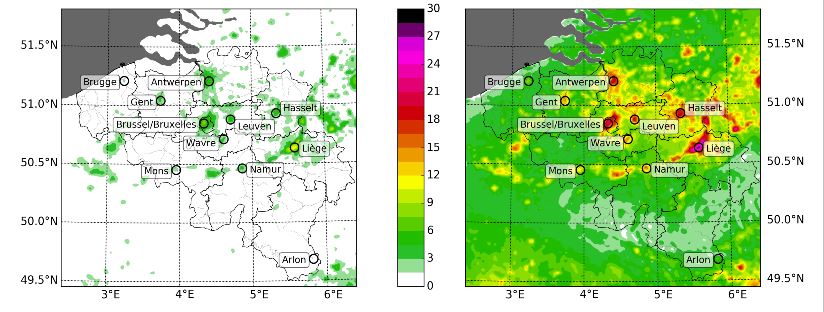
Annual mean heatwave degree days in Belgium. Historical on the left, and under business-as-usual climate change scenario on right. Not only the number of hot days days, but also the heatwave intensity are rising drastically under global warming, especially in the cities.
Heatwaves are intensifying in cities due to the double whammy of the urban heat island effect and global warming, according to a new study. The study’s authors used computer models to simulate with unprecedented detail the temperature changes through the mid-21st century in Belgian cities. They found that heatwaves become hotter, longer and more frequent because of greenhouse gas emissions, and that temperature above the heat stress alarm level increases by a factor of between 1.4 and 15 by the middle of this century.
“The...
Read More









Recent Comments